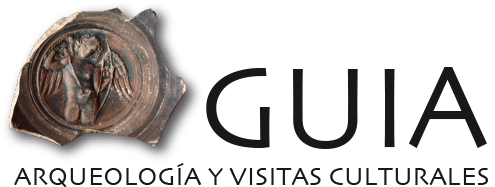In the capital of the Costa del Sol you can see the history of the Mediterranean, passing from vestiges of the founding Phoenicians almost three thousand years ago to the more energetic places of our current times, all within a vital and modern city. This cultural experience is concentrated at the city centre and easily accessible by foot.
Málaga
The hill of the Alcazaba is a place where various cultures converge. It was the site of Phoenician Malaka. On its slope the cavea or tiered seats of a Roman theatre can be seen in their entirety. At the top is the palace fortress which was the seat of the Muslim rulers who dominated this corner of Al-Andalus for eight centuries. Three concentric walled enclosures and seven gates protect the palaces, and within few metres we can see the evolution of Muslim architecture.
Muslim Malaqa, famous for its defences, was dominated from the heights by the Gibralfaro castle. In addition to exploring the monument and its interpretation centre, we can enjoy magnificent panoramic views of the city, the port and its bay, which will help us understand the reason for the existence of this maritime city.
For lovers of archaeology, there is a secret city to explore, with historical traces scattered in hidden corners such as basements and underground car parks.
The Cathedral of our Lady of the Incarnation is a little known gem which usually surprises its visitors. This impressively high Renaissance cathedral sits next to an unfinished Gothic church which itself overlaps the original mosque. Construction began in the 16th Century and continued through to the 18th Century. The magnificent choir stalls, made by the most famous Spanish Baroque sculptor, Pedro de Mena, enrich the interior. Outside it is the unfinished of one of the two towers which draws attention and has earned the cathedral the nickname of the Manquita (the one-armed lady).
The Picasso Museum of Malaga has meant the return of many works by its universally acclaimed son. The collection is distinguished from others dedicated to the artist because it consists mostly of works that Picasso kept until his death. Along with work from his childhood there is a veritable parade of his women, children and favourite topics, together demonstrating the rich technical ability that distinguishes this global artist.
Home to the museum is the inaptly named Count Buenavista’s Palace, an example of the urban architecture of the Renaissance. In the basement you can view the foundations of the city which support the walls and other structures of Phoenician Malaca.
With the Picasso Tour you can visit the places still remaining from his childhood, such as his home in the Plaza de la Merced, which now houses a Foundation dedicated to him, or the Gothic-Mudejar church of St. James, with its Baroque interior, where Picasso was baptized.
In recent years Malaga has become one of the Mediterranean destinations that receives the most cruise visitors. There must be a reason!
A short walk leads to the Carmen Thyssen Museum which occupies another beautiful building. The collection covers Romanticism and Costumbrism from the 19th century.
Although not habitually visited on the tourist circuit we strongly recommend the Glass and Crystal Museum to lovers of the decorative arts. Located in a carefully restored townhouse, it is a treasure chest of interesting glass artefacts.
The Contemporary Art Centre (CAC), based in a former market, has also helped to put Malaga on the creative map with its modern art exhibitions. It has a permanent collection and hosts shows by renowned artists from around the world.
The list of notable museums is completed with The Municipal Heritage Museum; a museum dedicated to Malaga’s famous Easter week and another dedicated to the great wine tradition of this area. There is also the possibility of visiting the markets, the wine cellars and the two botanical gardens- the Park Gardens in the city and the Conception Botanical Gardens, both well-favoured by the mild Malaga climate.
The Málaga experience can be realized through thematic visits (Muslim Malaga, Archaeological Malaga, Malaga and Picasso, Churches of Malaga, Malaga Museums…) or personalized visits according to your tastes, (for example, on one morning the Cathedral, Roman Theatre and Alcazaba or an afternoon visiting the Picasso Museum and the Alcazaba) or even comprehensive trips by bus. You could also choose to walk the streets, guided through the traditional narrow Muslim alleys into the straight streets around calle Larios. This is the main commercial artery of the city and results from the renovations at end of the 19th Century. Almost the whole centre is a pedestrian zone. Malaga deserves more than one day. At night you can choose to rest in a renovated hotel and visit the countless restaurants, bars and terraces on the streets and squares of the old town, or go to those by the sea, on the beaches of Pedregalejo and Huelin or in the port. Incidentally, in recent years Malaga has become one of the most popular destinations in the Mediterranean for cruise ships. There is a reason for that.




